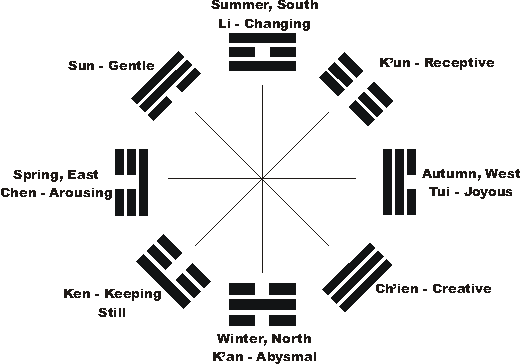

Pa Kua Chang means "hand of the eight trigrams." The photograph to the right shows Sifu Mo practicing Pa Kua.
Pa Kua derives its philosophy and name from the eight primary trigrams of the Book of Changes or I Ching. Sometimes used as an oracle, the I Ching represents the interplay of Yin (the broken lines) and Yang (the solid lines) through the relationships between the trigrams, and was called the "experimental basis of Chinese philosophy" by C.G. Jung. Pa Kua expresses these relationships through circular motions of deflection and return. Thus, it is characterised by the movement of the body in large circles while the hands move in small circles. The following figure shows the relationships of the trigrams in the "Inner World" or temporal arrangement.

This document is Copyright © 1999, 2000 Philip Mo. This page was last updated (m/d/y) 09/01/00.